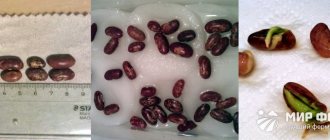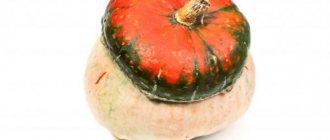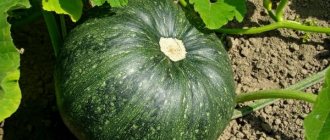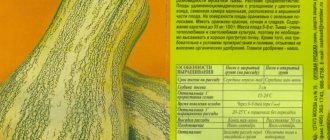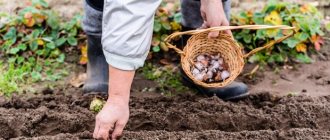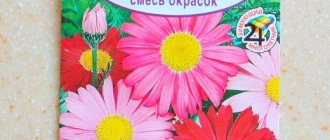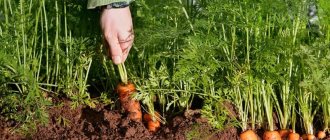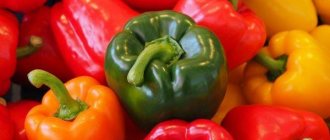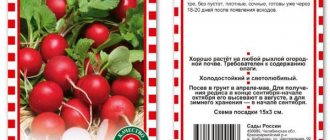Gymnosperm pumpkin differs from ordinary varieties in the structure of its seeds - they lack the usual hard shell and represent a valuable raw material for the food industry. We will learn about the popular types of this crop, its planting and cultivation.
Gymnosperm pumpkin
Gymnosperm pumpkin seeds have good oiliness
Gymnosperm pumpkin tolerates temperature changes well
Characteristics of gymnosperm pumpkin
Gymnosperm pumpkin is a climbing plant, practically no different from ordinary varieties.
Brief description of gymnosperm pumpkin:
- Plant. The lashes reach a length of 5-12 m. The stem is whip-shaped, hollow, massive. The mustache is long. Leaf cover is high.
- Leaves. Round, five-lobed, dark green, pubescent.
- Flowers. Large, bright yellow. Up to 80 female flowers are formed on the plant, and up to 400 male flowers.
- Roots. Powerful, occupy an area of 3-5 square meters. m. Capable of reaching a length of 10 meters.
- Fruit. Round, with a hard and thin crust. The fruits are striped - yellow, with green stripes. The seeds are medium-sized, in a thin shell of dark green color. The seed chambers of the fruit are deep and contain a large number of seeds. The pulp is slightly fibrous, thickness – 3-7 cm.
Characteristics of gymnosperm pumpkin:
| Characteristics/parameters | Description/meaning |
| Ripening time | 120 days. |
| Productivity | 20-40 kg from one bush. |
| Resistance to diseases and pests | Average. It can be affected by powdery mildew, mosaic, fruit rot, as well as pests - melon aphids, wireworms, etc. |
| Frost resistance | Not tall. Minimum soil temperature: +14-16 °C. |
| Fruit weight | 6-8 kg, maximum – 16 kg. |
| Drought resistance | Not tall. In the absence of watering, the fruits become smaller. |
| Keeping quality | Not tall. They are stored for no more than 2 months. |
| Purpose | Universal. Technical varieties - for extracting oil from seeds. In sweet varieties containing 5-8% sugar, the pulp is used to prepare purees, juices, cereals and other dishes. |
The pulp of gymnosperm pumpkin is practically no different in nutritional value from the pulp of ordinary varieties. But its seeds are different - the calorie content of gymnosperm pumpkin seeds is 100 kcal more than that of ordinary varieties with a hard peel.
Nutritional value of 100 g of gymnosperm pumpkin seeds:
- Calorie content – 650 kcal.
- Proteins – 23.4%.
- Fats – 84%.
- Carbohydrates – 8.4%.
- Dietary fiber – 30%.
- Water – 5 g.
The fat in the seeds of gymnosperm pumpkin is 35% more than that of conventional varieties, and there is slightly less protein and carbohydrates.
Prevention of diseases and pests
Even if all agrotechnical rules are followed, the crop can become infected with a fungus or virus. Bacteriosis or powdery mildew occurs most often on the plant. To prevent their appearance, pay special attention to spraying the bushes.
Soap solution is recognized as an excellent remedy for diseases. For 5 liters of water you will need 100 g of dry grated soap. Spray the beds with a spray bottle once every 5-10 days. It is best to do this early in the morning so that a protective soap film has time to form on the bushes before the sun appears.
There is also a dangerous disease called white rot. The infection affects the pumpkins themselves: first they become covered with a white coating, and then they rot. To prevent it, it is recommended to water the fruits only with warm water and feed them with ammonium nitrate and copper sulfate. On dry and hot days, it is recommended to remove the affected leaves and sprinkle the bushes with crushed coal.
Among the pests found in pumpkin beds are spider mites, which envelop the leaves with a thin web. Because of it, the leaves dry out and slowly wither. In hot weather, the crop is sprayed with an infusion of onion peels or a solution of keltan. After collection, we advise you to dig up the soil well to prevent the mite from appearing again.
Important! For preventive purposes, it is advised to maintain the hygiene of the beds, regularly fertilize the bushes and spray with Bordeaux mixture or copper sulfate solution. It is also important to treat the seeds and soil well before sowing - this prevents the appearance of diseases or unwanted insects.
Popular varieties of gymnosperm pumpkin
Gymnosperm pumpkin is represented by varieties that differ in ripening time, fruit size, yield and other characteristics. Moreover, they all have one thing in common - their seeds are without peel, in a transparent edible film:
- Gymnosemyanka. Mid-season variety. Ripens in 100-110 days. On a climbing plant there are 4-5 flattened fruits weighing 4-6 kg. The pulp is yellow, sweetish, and the content of carotene and sugars increases during storage. The seeds are olive green in color, high in vitamins and zinc. Cold resistance is moderate.
- Olga. Mid-season and mid-climbing variety. Ideal for squeezing pumpkin oil. The fruits are round, weight – 5-6 kg. The pulp is light, sweetish. The seeds are large.
- Miranda. Mid-season Polish variety with juicy pulp. The main difference is the semi-bush form of the plant. Occupies a small area - compared to climbing varieties. The fruits are flattened, with a light green rind and juicy, medium-sugar pulp. Fruit weight – 3-4 kg.
- Danae. A mid-season, highly climbing variety, ripening occurs 120 days after planting. The fruits are round, the rind is orange-yellow, mesh. The pulp is yellow-orange, with a pleasant aroma, crispy and dense. It is good when boiled and baked; delicious juices and purees are prepared from it. The weight of pumpkins is 3-5 kg. It has a high content of starch and sugar. Prone to cross-pollination.
- Juno. Early ripening variety. It is distinguished by strong climbing. Requires spatial isolation to avoid cross-pollination. Pumpkins are round, weighing 4 kg. The pulp has a pleasant taste and is used fresh, boiled, stewed, or baked. It has a very high shelf life - pumpkins can be stored for up to 4 months.
- Styrian. Austrian mid-season and long-climbing variety. The main purpose is the production of oil. The product obtained from the seeds has a nutty flavor. Fruit weight – 4-8 kg. Pumpkins can be stored for almost 3 months.
The nutritional value
The flesh of the gymnosperm does not have a pronounced taste. Some of its varieties, such as Apricot and Belorussian, have increased sugar content, so they are often used for making porridges, purees, and juice.
Gymnospermous varieties are valuable for their seeds. Their uniqueness lies in the absence of the usual hard shell. Their scope of application is quite wide:
- the seeds are used to make pumpkin oil, the benefits of which are beyond doubt: it is eaten and used in cosmetology;
- confectioners and cooks use fried and ground seeds as a seasoning for desserts, salads, main courses, and sauces;
- The high content of vitamins A and E (antioxidants) allows the oil from them to be used to treat certain diseases.
Advantages and disadvantages of gymnosperm pumpkin
Pros of gymnosperm pumpkin:
- High oil content of seeds. Varieties of this pumpkin are used on an industrial scale to obtain pumpkin oil.
- Ease of processing - due to the absence of hard shells. The process of squeezing out the oil is simplified.
- It can grow in almost all regions of the Russian Federation.
- Disease resistance.
- Tolerates temperature changes well.
Flaws:
- They are grown only by seedlings.
- Relatively low yield.
- Most varieties do not have good shelf life and are stored worse than ordinary pumpkin.
- Inferior to ordinary pumpkin in taste of pulp.
The gymnosperm pumpkin has many disadvantages, but it is still grown for its “naked” seeds, without husks.
Soil and crop rotation requirements
Gymnosperms, like all other types of pumpkins, are a heat-loving subtropical crop. Since in the Russian Federation, in most regions, the weather is not too sunny, pumpkins need well-lit areas with fertile soil.
Relationship of gymnosperm pumpkin to soil:
- Grows on fertile and loose soils enriched with organic matter.
- Can grow on soils with neutral acidity, slight acidity is allowed - pH from 6.5 to 7.5. On acidic soils, the culture is inhibited.
- The plant absorbs a lot of nutrients. One ton of fruit requires: potassium - 4.5 kg, nitrogen - 2.7 kg, phosphorus - 1.2 kg. Such needs cannot be satisfied by adding humus, compost or manure - it is necessary to use mineral fertilizers.
Crop rotation rules:
- Desirable predecessors are beets, cabbage, onions, carrots, potatoes.
- Undesirable - squash, zucchini, cucumbers, and other varieties of pumpkins.
Soil preparation
It is better to get rid of weeds immediately
When choosing a place for a crop, follow the rules of crop rotation: plant them after potatoes, tomatoes, onions or cabbage. Or plants that are specially embedded in the soil, allowing the earth to “rest”. But refrain from planting pumpkins after pumpkins; in this case, the soil will not be fertile enough. In addition, they have common pests that have managed to thoroughly establish themselves in the ground during the season.
For the Elegant variety, loose soil, in which humus predominates, is well suited. To determine the type of soil on your site, there is a special test. Take some earth and knead it like dough and then roll it into a sausage.
Sandy loam soil will fall apart immediately, but light loam soil will pass the test. If you can roll the soil into a ring, it is heavy loam. You can lighten heavy soil if you bring sand to the site, distribute it evenly and plow it.
In the fall, you need to add fresh manure to the soil. By rotting, it creates a beneficial structure, holding together soil that is too loose and loosening clayey soil. Having fertilized the garden bed well in this way, the mineral fertilizers added later will reveal themselves much better.
In spring, the area for cucumbers needs to be loosened again. If you did not apply manure in the fall, add humus and dig up the soil with a bayonet. Monitor the condition of the garden bed: weeds should be removed immediately. Around May 20-25, add mineral fertilizers, dig up the bed and level it with a rake.
Agricultural technology of gymnosperm pumpkin
Gymnospermous varieties, unlike ordinary pumpkins, are much more demanding in terms of care and growing conditions. Grown by seedlings and without seedlings. There is no need to carry out any special measures - pumpkins with “naked” seeds need watering, fertilizing, and loosening.
Seed preparation
You can buy seeds or collect them yourself - from your own harvested pumpkins. Rules for collecting and preparing seeds:
- Seeds are taken from pumpkins that are 100% ripe.
- The collected material is washed and dried thoroughly.
- Store collected seeds in paper bags.
- Before sowing, the seeds are heated at +40 °C for 10 hours.
- After warming up, the seeds are soaked in a germination stimulator for 12 hours.
Growing seedlings
Sowing seeds for seedlings begins 30-45 days before planting in open ground.
The procedure for growing seedlings:
- Prepare individual containers. 500 ml pots are suitable. Provide good drainage. Plants do not tolerate transplantation well, so you will have to do without picking - transplant seedlings from pots directly into open ground. The best option is to grow in peat tablets 10x10 cm.
- Fill the containers with ready-made substrate for cucumbers - it is sold in agricultural stores. Or prepare a soil mixture by mixing peat, humus and sawdust in a 2:1:1 ratio. Add complex fertilizer to this mixture - dose it according to the instructions.
- Properly prepared seeds - heated and soaked, plant one at a time in a pot. Bury each seed 4-5 cm.
- After planting, water the crops. Seeds germinate in 5-8 days.
- Maintain the temperature between +22 and +25 °C. The optimal daylight hours for seedlings are 12 hours.
- Water the seedlings regularly when they dry out. Avoid over-watering.
- Feed the seedlings with complex fertilizers once a week - as soon as the shoots appear.
- A week before planting, begin hardening. Take the seedlings outside - first for half an hour and, gradually increasing the duration of the walk, bring it up to 3-4 hours.
The pumpkin planting pattern depends on the variety:
- Bush pumpkin is planted according to a 70x70 cm pattern.
- Medium climbing – 70x140 cm.
- Large-climbing – 200x100 cm.
Planting seedlings in the ground begins when the soil warms up from +14 to +16 °C. Typically, such conditions are created in May-June - the exact timing depends on climatic conditions. Only strong seedlings are transplanted into the ground.
Transfer order:
- Prepare the garden bed. To prepare it, pour the following components into the hole if the climate is dry, or directly onto the ground if the climate is humid:
- mullein - 2 buckets;
- chernozem - 1 bucket;
- superphosphate – 1 tbsp. l.
- Make a depression in the prepared bed.
- Pour 3 liters of warm water into the hole.
- Plant the seedling in the hole using the transshipment method. And if the seedlings are grown in peat tablets, simply place them in holes along with the “container”.
- To make the seedlings take root faster, temporarily shade them with large leaves - for example, burdock will do.
Planting seeds in open ground
In the southern regions, where spring begins early, the seedless method of growing pumpkin is practiced. The soil is prepared in the traditional way - in the fall it is dug up and organic matter is added for digging.
Sowing begins when favorable circumstances arise - the soil warms up to +14-16 °C, and the likelihood of return frosts is eliminated.
The procedure for sowing pumpkin seeds in the ground:
- Loosen the soil before transplanting seedlings. Loosening depth is 6-7 cm. Remove weed rhizomes while loosening.
- Dig holes. The optimal diameter is 30-40 cm, depth is from 7 cm.
- Pour 1-2 liters of warm water into the hole.
- Add humus (5 kg), as well as superphosphate (75 g), ash (200 ml) and potassium sulfate (100 ml) into each well. Thoroughly mix the planted components with the soil.
- Plant 3-4 seeds in each hole - at intervals of 3-4 cm. Planting depth - 5-6 cm. Sprinkle them with soil and mulch with peat or humus.
- When the shoots appear, select the strongest from 3-4 shoots. Pinch the rest.
The benefits of pumpkin seeds for the human body
High in antioxidants, vitamins, minerals, and other nutrients, pumpkin seed consumption has been linked to a reduced risk of certain types of cancer, improved prostate health in men and bladder health in women and men, improved cardiovascular health, and lower blood sugar levels. blood and many other beneficial effects. Here are the benefits of pumpkin seeds:
High antioxidant content
Pumpkin seeds contain antioxidants such as carotenoids and vitamin E (4, 5, 6).
Antioxidants can reduce inflammation and protect your cells from harmful free radicals. Because of this, consuming foods rich in antioxidants may help protect against various diseases (7).
The high levels of antioxidants in pumpkin seeds are thought to be partly responsible for their positive health effects. In one study, when rats with arthritis were given pumpkin seed oil, there was a decrease in inflammation. Rats given the anti-inflammatory drug experienced side effects, while rats given pumpkin seed oil had no side effects (8).
Summary:
Pumpkin seeds are rich in antioxidants, which may help protect against disease and reduce inflammation.
Reduce the risk of developing certain cancers
Diets enriched with pumpkin seeds have been associated with lower rates of stomach, breast, lung, prostate, and colon cancers (5).
A large observational study found that their consumption was associated with a reduced risk of breast cancer in postmenopausal women (9).
Other studies suggest that lignans in pumpkin seeds may play a key role in the prevention and treatment of breast cancer (10).
Further test-tube studies showed that a pumpkin seed supplement could slow the growth of prostate cancer cells (11, 12).
Summary:
Some evidence suggests that pumpkin seeds may help prevent certain types of cancer.
Improves prostate and bladder health
Pumpkin seeds may help relieve symptoms of benign prostatic hyperplasia (BPH), a condition in which the prostate gland becomes enlarged and can cause problems urinating.
Several human studies have found that consuming these seeds reduces symptoms associated with BPH (13).
A study of more than 1,400 men examined the effects of pumpkin seed consumption on BPH. After a year, men using them reported reduced symptoms and improved quality of life (14).
There are also studies that suggest that eating pumpkin seeds or taking them as supplements may help treat symptoms of overactive bladder (OAB). One study found that taking 10 g of pumpkin seed extract daily improved urinary function in men and women with OAB (15).
Summary:
Pumpkin seeds may reduce symptoms of benign prostatic hyperplasia and overactive bladder.
Very high magnesium content
Pumpkin seeds are one of the best natural sources of magnesium. This is important because magnesium deficiency in the body is common in many developed countries. For example, in the US alone, about 79% of adults consume less than the recommended daily magnesium intake (16).
Magnesium is essential for more than 600 chemical reactions in the body. Adequate magnesium levels are important for:
- Blood pressure control (17).
- Reduce the risk of cardiovascular disease (18).
- Formation and maintenance of healthy bones (19).
- Regulate blood sugar levels (20, 21).
Read more about the role of magnesium in the body on this page - Magnesium: what the body needs it for, what foods it contains.
Summary:
Pumpkin seeds are a rich source of magnesium. Healthy magnesium levels are important for your blood pressure, heart health, bone health, and blood sugar regulation.
Improve heart health
Pumpkin seeds are a good source of antioxidants, magnesium, zinc, and fatty acids, which may help maintain heart health (22).
Animal studies have also shown that pumpkin seed oil may help reduce high blood pressure and high cholesterol. These are two important risk factors for cardiovascular disease (23, 24).
A study of 35 postmenopausal women found that consuming pumpkin seed oil reduced diastolic blood pressure by 7% and increased good HDL cholesterol by 16% over a 12-week period (25).
Other research suggests that nitric oxide enzymes found in pumpkin seed oil may be responsible for the beneficial effects on heart health (26).
Nitric oxide helps dilate blood vessels, improve circulation, and reduce the risk of cholesterol plaques forming in the arteries.
Summary:
The nutrients in pumpkin seeds can help keep your heart healthy by lowering blood pressure and increasing good cholesterol levels.
Reduce blood sugar levels
Animal studies have shown that pumpkin, pumpkin seeds, pumpkin seed powder, and pumpkin juice may lower blood sugar (27, 28).
This is especially important for people with diabetes, who may struggle to control their blood sugar levels.
Several studies have found that adding pumpkin juice or pumpkin seed powder to the diet reduces blood sugar levels in people with type 2 diabetes (28).
The high magnesium content in pumpkin seeds may be responsible for their positive effects on people with diabetes.
An observational study of more than 127,000 men and women found that diets rich in magnesium were associated with a 33% reduction in the risk of developing type 2 diabetes in men and a 34% reduction in the risk of developing the disease in women (29).
More research is needed to confirm this positive effect on blood sugar levels.
Summary:
Pumpkin seeds may help lower blood sugar levels in people with type 2 diabetes. However, more research is needed.
Rich in fiber
Pumpkin seeds are an excellent source of fiber (dietary fibre). Pumpkin seed kernels contain 3.9 grams of fiber per 100 grams, which provides 16% of the recommended daily intake.
A diet high in fiber can promote good digestive health. Additionally, high-fiber diets are associated with a reduced risk of cardiovascular disease, type 2 diabetes, and obesity (30).
Read more about what fiber is and what it is needed for here - Fiber: what it is and what it is needed for.
Summary:
Whole pumpkin seeds are an excellent source of fiber. High-fiber diets are associated with a wide range of health benefits, including a reduced risk of heart disease, diabetes and obesity.
May improve sperm quality
Low zinc levels are associated with reduced sperm quality and an increased risk of infertility in men (31).
Since pumpkin seeds are a rich source of zinc, they can help improve sperm quality. Evidence from one study in mice suggests that they may also help protect human sperm from damage caused by chemotherapy and autoimmune diseases (32).
Pumpkin seeds also contain high levels of antioxidants and other nutrients that may promote healthy testosterone levels and improve overall health.
Together, all of these factors can help increase fertility and reproductive rates, especially in men.
Summary:
The high zinc content in pumpkin seeds may help improve sperm quality and fertility in men.
May help improve sleep
If you have trouble sleeping, you can consume pumpkin seeds before bed. They are a natural source of tryptophan, an amino acid that may promote healthy sleep. Consuming about 1 gram of tryptophan is thought to help improve sleep (33).
However, to get the required 1 gram of tryptophan, you will need to eat about 200 grams of pumpkin seeds.
The zinc in these seeds can also help convert tryptophan into serotonin, which is then converted into melatonin, a hormone that regulates your sleep cycle. Additionally, pumpkin seeds are an excellent source of magnesium. Adequate magnesium levels have also been associated with improved sleep (34).
Some small studies have found that taking magnesium supplements improves sleep quality and total sleep time in people with low magnesium levels (35, 36).
Summary:
Pumpkin seeds are a good source of tryptophan, zinc and magnesium, which promote good sleep.
Easy to add to your diet
If you want to experience the benefits of pumpkin seeds, the good news is that they are easy to include in your diet. In many countries, they are popular snacks that can be eaten raw or fried, salted or unsalted.
Besides eating them in their pure form, you can add them to smoothies or yogurt and fruits.
You can include them in your meals by adding them to salads, soups or breakfast cereals. Some people use pumpkin seeds in baking as an ingredient in sweet or savory breads, cakes and pies.
However, like many seeds and nuts, they contain phytic acid, which can reduce the bioavailability of some nutrients you get from food.
If you regularly eat seeds and nuts, you may want to try sprouting them before consuming them to reduce their phytic acid content and increase their nutritional value. Roasting may also help.
Summary:
Pumpkin seeds can be easily included in the diet as a snack or as an additional ingredient in various dishes.
Features of care
Gymnospermous pumpkins require the same care as regular varieties:
- Watering. The culture needs regular watering. The soil must be moistened all the time. The pumpkin needs irrigation all the time while it is growing. It is recommended to irrigate pumpkin in the mornings, when there is a minimum temperature difference between the soil and water, then the roots of the plant will not be stressed.
- Loosening. The soil is regularly loosened to remove crust and improve aeration. Thanks to loosening, the roots are provided with oxygen.
- Mulching. To keep the soil loose and not dry out, as well as to prevent the growth of weeds, mulching is used. The soil is mulched with hay, sawdust, straw, and peat.
- Feeding. As soon as the seedlings take root in the beds, fertilizing begins. Fertilizers are applied for the first time 7-10 days after planting. Bird droppings, mullein, herbal infusions, ash, as well as mineral complex fertilizers are used for fertilizing. During the growing season, the pumpkin is fed 3-4 times. Fertilizing is combined with watering - water promotes the absorption of nutrients and prevents root burns.
Reviews from gardeners
Those who plan to grow gymnospermous pumpkin should take into account the fact that the plant is demanding on weather conditions, needs regular watering and cultivation separately from other crops, especially pumpkins and melons, which can harm it.
According to some vegetable growers, the size of the stalk affects the shelf life of the vegetable: the longer it is, the more time it is able to retain its taste. This principle can be used as a guide when choosing the order of use of fruits.
Every year, both professional vegetable growers and amateurs engage in the cultivation of gymnospermous pumpkin. Taking into account the characteristics of the cultivation region and the size of the plot, you can always choose the most suitable variety for specific conditions.
Possibility of cross-pollination
Gymnosperm pumpkin is pollinated by insects. There should be no squash, zucchini, or other varieties of pumpkin near the pumpkins - otherwise the pumpkin with soft seeds will soon disappear.
The best method of pollination to avoid cross-pollination and maintain the purity of the variety is artificial:
- Using a brush, female flowers are pollinated with pollen from male flowers.
- To prevent insects from reaching the pollinated flower, it is covered with bags.
Thanks to artificial pollination, it is possible to prevent the degeneration of the variety and increase productivity.
Harvest and storage
Rules for collecting gymnosperm pumpkin fruits:
- The ripeness of the fruit is determined by the rich color of the fruit and the dry stalk.
- The climate of the region influences the timing of harvesting. Harvesting usually takes place in the fall. In temperate climates, pumpkins are ready for harvest in mid-October, in southern regions - in mid-September.
- The fruits are picked with stalks.
- It is advisable to collect all the fruits in one day - before the onset of frost.
The fruits are not stored for long - usually 2 months; over time they begin to rot, and the seeds germinate. Some varieties are stored for 3 or even 4 months.
Pumpkin storage conditions:
- Room temperature – up to +10 °C.
- Humidity – up to 80%.
- Pumpkins are not stored on the ground; they are placed on shelves, covered with straw - the fruits should not touch each other.
- From time to time, the fruits are inspected in order to remove rotten ones in time.
Pumpkins with short stalks should be processed first - they have a shorter shelf life.
To learn how to plant a gymnosperm pumpkin and how to care for it, watch the following video:
Reviews from gardeners and farmers
★★★★★
Boris, 35 years old, amateur gardener, Rostov region. The gymnosperm pumpkin is very powerful - lashes, flowers, leaves, everything is large.
It grows like a monster, the vines spread everywhere, suppressing the weeds. I plant on a compost heap, so there are no problems with nutrition. The yield is high, the pulp tastes so-so, but the seeds are delicious. ★★★★★
Zinaida, 45 years old, summer resident, Voronezh region. Gymnosperm pumpkin has worse flesh than regular pumpkin - not as sweet and tasty, but the seeds are excellent, I call them “for lazy people.”
But you need to eat them little by little - they are very nutritious. Caring for it is the same as for an ordinary pumpkin, the only difference is that it must be planted away from cucumbers, zucchini and pumpkins, otherwise it will cross-pollinate and degenerate. ★★★★★
Pavel, 30 years old, farmer, Krasnodar region. I grow gymnosperm pumpkin using drip irrigation.
Productivity per hectare – up to 1200 kg. I use the seeds for butter, and the pulp goes to feed livestock. If you sell products for export, you can make good money. Hide
Add your review
Gymnosperms are of interest, first of all, to lovers of pumpkin seeds and farmers who can grow this unpretentious and productive crop for industrial purposes. Pumpkin oil is a valuable liquid product, the sale of which can make a good business.
0
0
Copy link
Harm of pumpkin seeds to the human body
While pumpkin seeds are undoubtedly healthy, they can be a source of unwanted side effects. Here's why pumpkin seeds are harmful:
Gas, diarrhea, or constipation
Excessive consumption of pumpkin seeds, even when chewed thoroughly, can lead to intestinal gas and diarrhea. Pumpkin seeds are rich in dietary fiber, which reaches your large intestine and is broken down by bacteria.
Gas formation is a side effect of this process, especially in people who are not accustomed to fiber-rich foods. Eating more fiber than you're used to can also lead to loose, watery stools.
However, if you always have diarrhea after eating pumpkin seeds, you may have an intolerance or sensitivity to the food. Constipation is also a possible, although less likely, side effect of eating pumpkin seeds—the fiber you get from eating large amounts of pumpkin seeds can also cause constipation.
Preventing Side Effects
Eating pumpkin seeds in moderation (30 gram serving) and with plenty of liquid can prevent digestive problems. Pumpkin seeds are also known to cause headaches and migraines in some people. However, if you are not prone to migraines, you probably will not experience them after consuming this product.
Avoid Toxins in Spoiled Pumpkin Seeds
While the unsaturated fatty acids in pumpkin seeds promote cardiovascular health, they also make the seeds prone to spoilage quickly. Eating rancid pumpkin seeds exposes your body to harmful free radicals and toxic compounds that can increase your risk of cancer, heart disease and other chronic diseases. Fresh, dried pumpkin seeds can last about two months at their peak in an airtight container in the refrigerator. Seeds that smell musty, oily, or grassy are likely rancid. (37, 38)
Pumpkin seeds, Pumpkin
